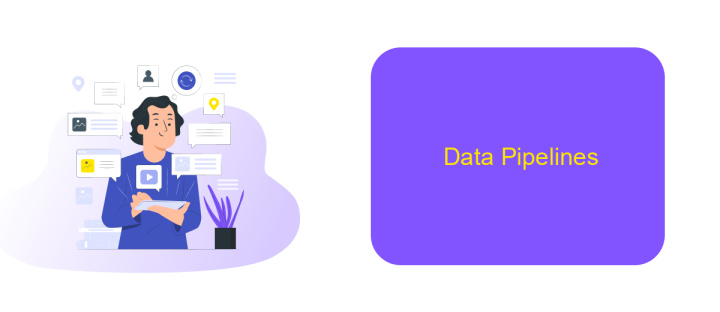Airflow Vs Airbyte
When it comes to data engineering, choosing the right tools for orchestrating and integrating data workflows is crucial. Two popular options are Apache Airflow and Airbyte. While Airflow excels in complex workflow management and scheduling, Airbyte focuses on seamless data integration with a vast array of connectors. This article delves into the strengths and weaknesses of each, helping you decide which suits your needs best.
Data Connectivity and Integration
When it comes to data connectivity and integration, both Airflow and Airbyte offer robust solutions but cater to different needs. Airflow excels in orchestrating complex workflows, making it a powerful tool for managing dependencies and scheduling tasks across various data sources.
- Airflow provides extensive support for custom plugins and operators, allowing for seamless integration with a wide range of data sources and services.
- Airbyte focuses on simplifying the process of data extraction and loading, offering a user-friendly interface and a growing list of pre-built connectors for popular data sources.
- For those looking to streamline their integration processes, services like ApiX-Drive can be invaluable, offering automated workflows and easy-to-configure connectors for various applications.
In summary, while Airflow is ideal for those needing intricate workflow management and custom integrations, Airbyte and services like ApiX-Drive provide simpler, more accessible solutions for data connectivity and integration, making it easier to get data where it needs to go with minimal hassle.
Architecture

Apache Airflow and Airbyte are both powerful tools for managing data workflows, but they have distinct architectural differences. Airflow is designed as a workflow automation tool, orchestrating complex data pipelines through Directed Acyclic Graphs (DAGs). It leverages a modular architecture where each task runs in its own environment, offering high flexibility and scalability. Airflow's scheduler and executor components ensure efficient task management, while its integration capabilities with various data sources and sinks make it highly adaptable for diverse data engineering needs.
On the other hand, Airbyte focuses on data integration, providing a more specialized architecture for extracting and loading data from numerous sources to destinations. It uses a connector-based approach, where each connector is a standalone module responsible for a specific data source or destination. This modularity simplifies the process of adding new data sources. Additionally, services like ApiX-Drive can enhance Airbyte's integration capabilities by automating and streamlining the configuration of these connectors, further easing the setup of complex data pipelines.
Data Transformation

Data transformation is a crucial step in any data pipeline, ensuring that raw data is converted into a format suitable for analysis and reporting. Both Airflow and Airbyte offer capabilities for data transformation, but they approach it differently.
- Airflow: Primarily used for orchestrating complex workflows, Airflow allows you to define custom transformation tasks using Python. It integrates well with various data processing frameworks like Apache Spark, Pandas, and SQL databases.
- Airbyte: Focused on data extraction and loading, Airbyte supports basic transformations through its connectors. For more complex transformations, it can be integrated with other tools or services like dbt (data build tool).
For those looking to streamline their data integration and transformation processes, services like ApiX-Drive can be invaluable. ApiX-Drive offers a range of integrations that can automate data flow between different platforms, reducing the need for manual intervention and ensuring data consistency. Whether you choose Airflow or Airbyte, leveraging tools like ApiX-Drive can enhance your data transformation capabilities.
Data Pipelines

Data pipelines are the backbone of modern data engineering, facilitating the flow of data from source to destination while ensuring its integrity and quality. Airflow and Airbyte are two prominent tools often used for building and managing these pipelines, each with its unique strengths and use cases.
Airflow is a powerful workflow automation tool that excels in orchestrating complex data workflows. It allows users to define, schedule, and monitor workflows through a user-friendly interface. Airbyte, on the other hand, specializes in data integration, offering a robust platform to extract and load data from various sources. It simplifies the process of connecting to APIs, databases, and other data sources.
- Airflow: Ideal for complex workflow orchestration and scheduling.
- Airbyte: Best for seamless data integration and ETL processes.
- ApiX-Drive: Excellent for setting up and managing integrations between various services and APIs.
Choosing between Airflow and Airbyte depends on your specific needs. If your focus is on orchestrating intricate workflows, Airflow is the better choice. However, if you require a straightforward solution for data integration, Airbyte is more suitable. Additionally, services like ApiX-Drive can complement both tools by streamlining the setup of integrations, making your data pipeline more efficient.
Pros and Cons
Airflow offers robust scheduling and monitoring capabilities, making it an excellent choice for complex workflows that require precise timing and dependencies. Its extensive support for Python allows for custom code execution, providing flexibility in data pipelines. However, its complexity can be a downside for smaller teams or simpler projects, as it requires significant setup and maintenance effort. Additionally, Airflow's steep learning curve may pose challenges for those unfamiliar with its architecture.
On the other hand, Airbyte is designed for ease of use, featuring a user-friendly interface and pre-built connectors for various data sources. This makes it ideal for quickly setting up data integrations without extensive coding. Services like ApiX-Drive can further simplify integration processes, offering automated workflows and seamless connections between apps. Nonetheless, Airbyte might lack the advanced scheduling and customization options that Airflow provides, potentially limiting its suitability for highly complex or large-scale data operations.


FAQ
What are the primary differences between Airflow and Airbyte?
Can Airflow and Airbyte be used together?
Which tool is better for ETL processes?
Is it possible to integrate third-party services for automation and integration with Airflow and Airbyte?
Which tool is easier to set up for a beginner?
Routine tasks take a lot of time from employees? Do they burn out, do not have enough working day for the main duties and important things? Do you understand that the only way out of this situation in modern realities is automation? Try Apix-Drive for free and make sure that the online connector in 5 minutes of setting up integration will remove a significant part of the routine from your life and free up time for you and your employees.

